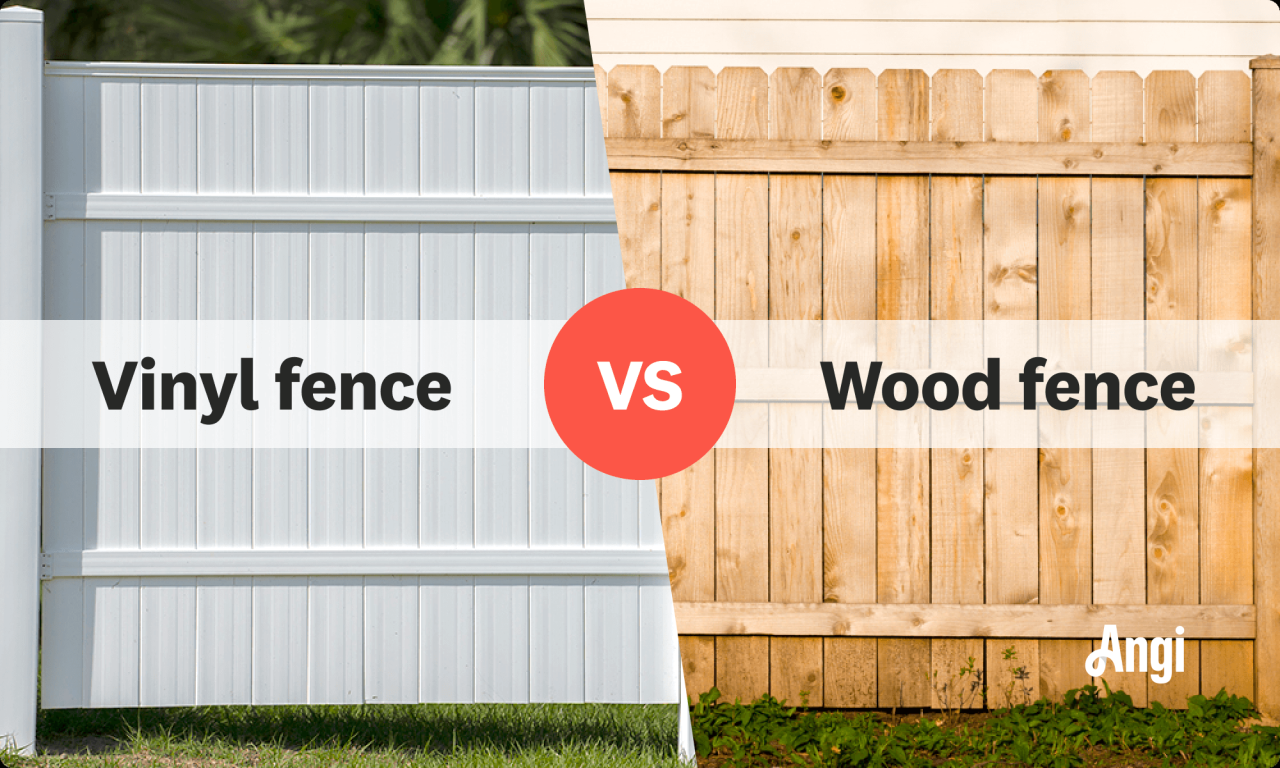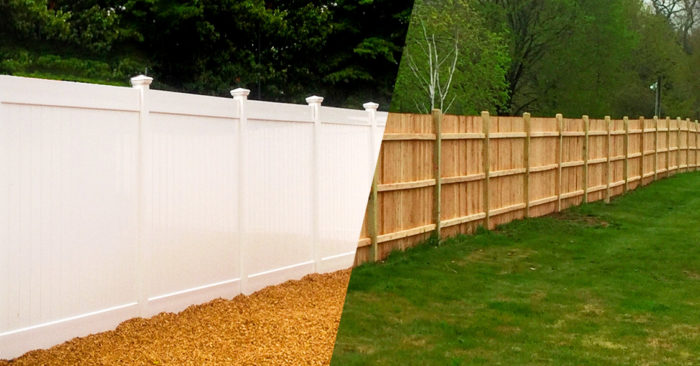Vinyl Fencing vs Wood Fencing: A Comprehensive Comparison

Exploring the differences between vinyl fencing and wood fencing, this article delves into the key aspects that differentiate these two popular fencing materials. From durability to maintenance requirements, color options to installation processes, this comparison aims to provide valuable insights for those considering fencing options for their property.
Vinyl Fencing
Vinyl fencing is known for its durability and longevity, making it a popular choice for homeowners looking for a low-maintenance fencing option. Compared to wood fencing, vinyl fencing is much more resistant to rot, decay, and insect damage, making it a long-lasting investment for your property.
Durability
Vinyl fencing is highly durable and can withstand harsh weather conditions without deteriorating. Unlike wood fencing, which can warp, crack, or rot over time, vinyl fencing maintains its structure and appearance for years to come.
Maintenance Requirements
One of the main advantages of vinyl fencing is its low maintenance requirements. Unlike wood fencing that needs regular staining, painting, or sealing to prevent decay, vinyl fencing simply needs occasional cleaning with soap and water to keep it looking like new.
Color Options
Vinyl fencing offers a wide range of color options to suit your aesthetic preferences and complement your property's exterior. From classic white to earth tones and wood-like finishes, you can find the perfect color to enhance the look of your outdoor space.
Wood Fencing

Wood fencing offers a timeless and natural aesthetic appeal that can enhance the beauty of any property. The warm tones and textures of wood create a classic and inviting look that complements various architectural styles.
Natural Aesthetic Appeal
Wood fencing is known for its organic look and feel, blending seamlessly with the surrounding landscape. The natural grains and colors of wood can add warmth and character to outdoor spaces, creating a charming and rustic atmosphere.
Cost of Installation
When it comes to installation costs, wood fencing tends to be more affordable upfront compared to vinyl fencing. However, it is important to consider the long-term maintenance expenses associated with wood fencing, such as staining, sealing, and repairs, which can add up over time.
- Wood fencing generally requires more maintenance than vinyl fencing, as it is susceptible to rot, decay, and insect damage.
- Regular maintenance tasks like staining and sealing are necessary to protect the wood from the elements and ensure its longevity.
- While the initial cost of wood fencing may be lower, the ongoing maintenance expenses can make it a less cost-effective option in the long run.
Environmental Impact
Using wood for fencing purposes raises concerns about the environmental impact of deforestation and the depletion of natural resources. However, many wood fencing manufacturers are now offering sustainable and eco-friendly options, such as using certified wood from responsibly managed forests.
It is essential to choose wood fencing products that are sourced from sustainable practices to minimize environmental harm.
Maintenance
Vinyl and wood fencing require different levels of maintenance to keep them looking their best and ensure longevity. Here is a step-by-step guide on how to maintain vinyl fencing and tips on preserving the appearance of wood fencing.
Maintaining Vinyl Fencing
- Clean the vinyl fence regularly with a mixture of mild soap and water to remove dirt and grime.
- Avoid using harsh chemicals or abrasive materials that could damage the vinyl surface.
- Inspect the fence for any cracks, chips, or damage, and repair them promptly to prevent further deterioration.
- Rinse the fence thoroughly after cleaning to remove any soap residue.
- Apply a vinyl protectant or UV inhibitor to prevent fading and discoloration from sun exposure.
Preserving Wood Fencing
- Regularly inspect the wood fence for signs of rot, mold, or insect damage, especially in areas prone to moisture.
- Clean the wood fence with a gentle cleaner and a soft brush to remove dirt and debris without damaging the wood.
- Apply a wood sealer or stain to protect the wood from moisture, UV rays, and other environmental factors.
- Trim back any vegetation or overhanging branches that could rub against the fence and cause damage.
- Consider applying a wood preservative or fungicide to prevent rot and decay in humid or wet climates.
Longevity with Proper Maintenance
With proper maintenance, vinyl fencing can last for 20-30 years or more, as it is resistant to rot, fading, and insect damage. Wood fencing, on the other hand, requires more maintenance and may need to be replaced every 10-15 years if not properly cared for.
By following the maintenance tips provided, you can extend the lifespan of both types of fencing and keep them looking great for years to come.
Installation
When it comes to installing fencing, whether vinyl or wood, the process can vary in terms of complexity, tools required, and special considerations. Let's delve into the specifics of installing vinyl fencing compared to wood fencing.
Vinyl Fencing Installation
Installing vinyl fencing typically requires the following tools and materials:
- Post hole digger
- Concrete mix
- Level
- Saw for cutting rails
- Measuring tape
- Screws or brackets
Special considerations for vinyl fencing installation may include making sure the posts are set at the correct depth and ensuring proper alignment to maintain the integrity of the fence.
Wood Fencing Installation
When installing wood fencing, you may need:
- Post hole digger
- Concrete mix
- Level
- Hammer
- Nails or screws
- Saw for cutting wood
Special considerations for wood fencing installation involve treating the wood to prevent rot and decay, as well as regular maintenance to ensure longevity.
Ending Remarks

In conclusion, both vinyl fencing and wood fencing have their own unique advantages and considerations. Whether you prioritize durability, aesthetics, or environmental impact, understanding the differences between these materials is crucial in making an informed decision for your fencing needs.
User Queries
Are vinyl fences more durable than wood fences?
Vinyl fences are generally considered more durable than wood fences as they are resistant to rot, decay, and insect damage.
What are the maintenance requirements for vinyl fencing?
Vinyl fencing requires minimal maintenance, usually limited to occasional cleaning with soap and water to keep it looking new.
Is wood fencing more environmentally friendly than vinyl fencing?
Wood fencing has a higher environmental impact compared to vinyl fencing due to the use of natural resources and potential for deforestation.
How can I maintain the appearance of wood fencing?
To preserve the appearance of wood fencing, regular staining or painting is recommended to protect it from weathering and extend its lifespan.
What tools are required for installing vinyl fencing?
Common tools for installing vinyl fencing include a post hole digger, level, measuring tape, and a power drill.

